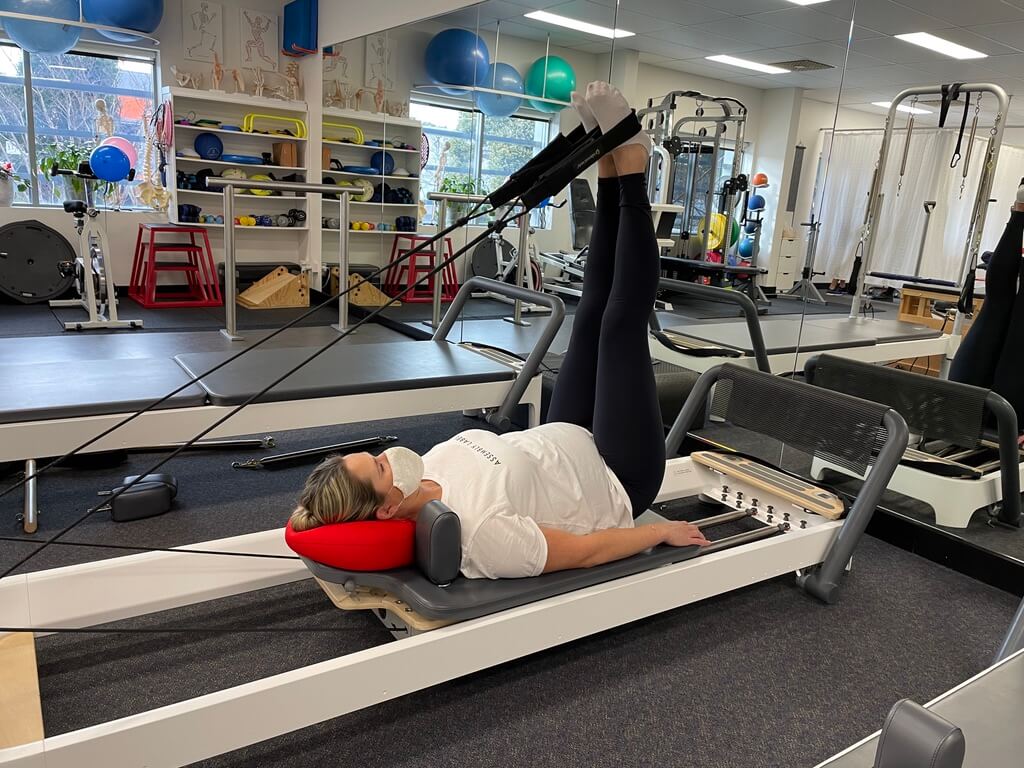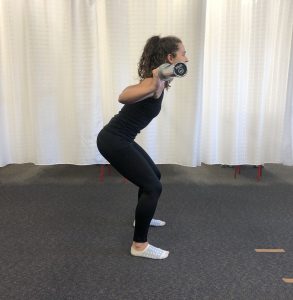Pregnancy is an exciting but often daunting time. Many mums-to-be are unsure about how to exercise or what they can do safely during pregnancy.
Exercise is very important during pregnancy: it helps to keep your body strong, reduces the risk of gestational diabetes; controls excessive weight gain, improves your pelvic floor function and speeds up recovery after you have given birth.
Pelvic floor and core strength
It essential to have a strong and well-functioning pelvic floor. These muscles support your pelvis and maintain your continence. It is important to work on these muscles during pregnancy. Towards the end of pregnancy, a baby sitting on your pelvic floor is like a 90kg man standing on a trampoline. That’s a lot of stress on such small muscles! So even those women who have a c-section can suffer from incontinence after birth. Research shows that 1 in 3 women will have some form of incontinence after giving birth.
Your pelvic floor is just one of 4 deep core muscles that work together to provide stability in your spine and pelvis. As you come closer to giving birth, your body releases a hormone called Relaxin. This hormone is responsible for making your ligaments more lax, therefore, your spine and pelvis become less stable. This is when you need strong core muscles to hold you together. Strong core muscles can help prevent back pain during pregnancy, during labour and after giving birth. If you have a rectus diastasis (abdominal separation) after giving birth, core training is the first step to closing the gap. It will also allow you to return safely to sport and exercise.
Not only is pelvic floor strength important, but so is learning how to RELAX these muscles. Did you know that an overactive pelvic floor can also contribute to incontinence and pelvic pain? Learning diaphragmatic breathing and pelvic floor relaxation techniques is an essential skill to learn during pregnancy as this can help you during birth and aims to reduce the risk of perineal tearing.
Cardiovascular exercise
Cardiovascular exercise is a great way to control excessive weight gain during pregnancy and maintain a healthy lungs and heart. If you haven’t exercised much before, be sure to start slowly. Walking is great and so is hill climbing for increased intensity. As far as running and jumping goes, everyone is different. Some will be able to continue jogging into the third trimester. Others will find this uncomfortable after just a few weeks. Be sure to listen to your body. If you have incontinence, back or pelvic pain, then running is not for you. Pushing through this can actually make things worse and you will further weaken your pelvic floor. It’s not worth it! Try swimming, sand hill walking or cycling instead. This is easier on the pelvic floor but can provide you with the same high intensity. When exercising for cardiovascular fitness, research suggests you lower your intensity by 25-30%, keep your heart rate below 140-150bpm and avoid elevating your temperature too much.
Weights and resistance training
Resistance training is another great way to control pregnancy weight gain and reduce the risk of gestational diabetes. As well as core stability training, weight training allows you to keep your global muscles strong and this will help support your joints as your hormones change. Pubic, lower back and sacroiliac joint pain is common in pregnancy. Having strong gluteal and lower body muscles can help provide stability to your pelvis and keep you on your feet longer. Lower limb strengthening can also help with leg cramps, restless legs, varicose veins and fluid retention. Some people may need to be careful with single leg exercises as their pregnancy progresses. If you start to develop pubic or pelvic pain, your physiotherapist may need to modify your exercise routine.
Upper body strength is important too as you will need to be carrying a baby in your arms and lifting prams in and out of cars. Postural strength is also needed for when you are feeding the baby so that you don’t develop upper back and neck pain.
Lifting heavy loads increases your intra-abdominal pressure and puts strain on your pelvic floor. Your pelvic floor is already under extra stress at this time to it is important to listen to your body as lifting heavy loads (for some people) can increase the chance of a pelvic floor prolapse and incontinence. As your pregnancy progresses you will need to lower the amount of weight you are lifting. You may lift lighter loads but do more repetitions if you are able.
Listen to your body. Now is not the time to go crazy with your exercise regime. Do what you know is safe and beneficial. Your body (and baby) will thank you for it.
Note: We suggest getting clearance from your doctor before beginning or changing your exercise regime, especially if you have any other health conditions or complications with your pregnancy.
Please call the clinic to book your initial appointment with our Women’s Health Physiotherapist for further guidance on exercise during pregnancy.




